CHAMPAGNE
J.M. LABRUYÈRE
NEW RELEASE
Why Champagne?
Champagne J.M Labruyère is the fourth chapter in the great winemaking history of the Labruyère family.
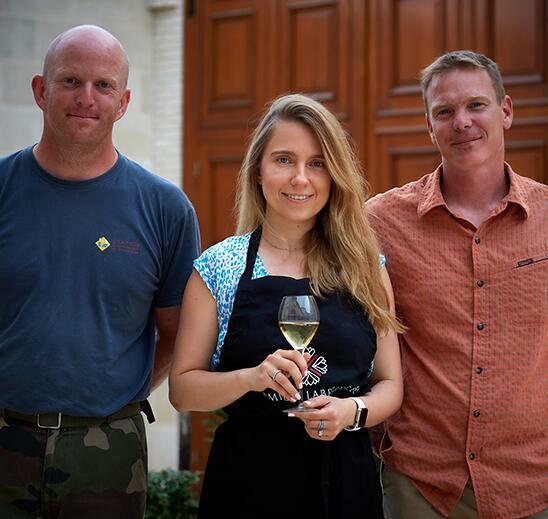
They are the proud owners of Domaine Labruyère in Moulin-à-Vent, Domaine Jacques Prieur in Burgundy and Château Rouget in Pomerol. Having been the exclusive UK agent since 2017, we are delighted to bring you the latest release from this immensely promising domaine.
Having taken the reins at the family estates in 2008, Edouard Labruyère believed that Champagne was a region with huge diversity of terroir, that in many cases was being obscured by the dominance of big brands and their insistence on “house style” rather than site expression.
He felt that like Burgundy and the great Beaujolais Cru of Moulin-à-Vent, the grand cru village of Verzenay possessed a variety of distinctive terroirs that if handled correctly, could express the individual character of each vineyard. In 2012, Edouard purchased the 6.6-hectare estate, and named it after his ancestor Jean-Marie Labruyère who in 1850 founded Domaine Labruyère in Moulin-à-Vent and begun the winemaking legacy that has been passed down through seven generations.
Terroir: Verzenay & La Montagne de Reims

Verzenay is situated in the middle of the slope on the northern side of the Montagne de Reims, an undulating plateau of forests and thickets that snakes its way in an “s” like formation from the city of Reims to Épernay. Champagne J.M Labruyère’s vines are planted in clay-limestone subsoils, which combined with the village’s northerly exposure give the wines their unique characteristics. Verzenay is renowned for its high-quality Pinot Noir and so unsurprisingly this forms the majority of Champagne Labruyère’s plantings (71%).
However, sites such as Sous-pisse Renards and Les Rochelles have been identified as being particularly suited to Chardonnay which makes up the remaining 29%. All of the wines produced at Champagne Labruyère have grand cru status and because the vines are 100% family owned (a rare thing in Champagne), this allows the winemaking team to focus on crafting terroir focused wines with a wonderful sense of place.
Viticulture & Winemaking
One of the defining principles at Champagne J.M Labruyère is sustainable viticulture.
The day-to-day management of the cellar and vineyard is undertaken by Vincent Van Waesberghe (chef de cave and chef de culture), and the winemaking is overseen by celebrated oenologist Nadine Gublin – also the winemaker at the great Domaine Jacques Prieur and Domaine Labruyère.
One of the defining principles at Champagne J.M Labruyère is sustainable viticulture. Since 2012, the estate has gone to great lengths to create beehives and traditional hedges to encourage more biodiversity in the vineyards. In addition, rather than relying heavily on chemical pesticides they have implemented biocontrol methods that rely on the introduction of other organisms to protect the vines from pests and predators. 2020 marks the start of the conversion period towards organic certification.
All harvesting is done manually, and sorting takes place in the vineyard to select the healthiest clusters. The grapes are then gently pressed, with each plot being vinified separately in thermos-regulated stainless-steel tanks, or in oak barrels sourced from Domaine Jacques Prieur. All wines go through full malolactic fermentation before being left to age on the lees for 3-5 years.
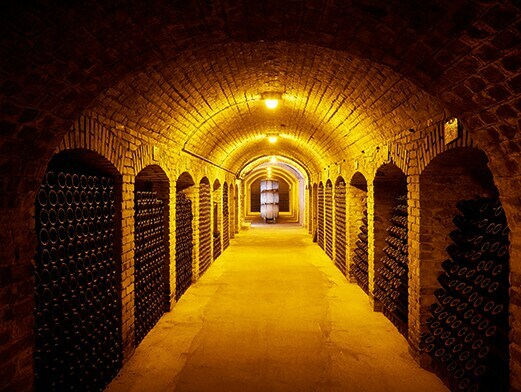
Dosage
To fully grasp the wines of Champagne J.M Labruyère understanding the role of dosage —or in this case the lack of it— is fundamental
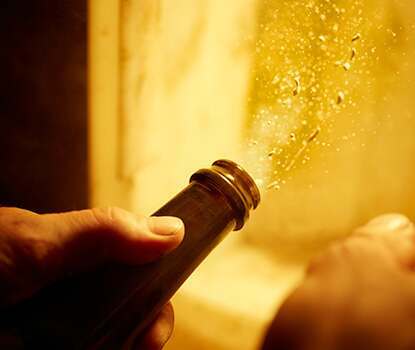
After a Champagne has gone through blending and bottling, it spends time maturing in the producer’s cellar on the lees before being riddled to loosen the sediment. Finally, the wine is then disgorged to remove the dead yeast cells from the bottle and then the dosage is added.
So, what is dosage and why is it particularly relevant for Champagne J.M Labruyère?
Dosage is the process of adding a small amount sugary liquid known as liqueur de dosage (sometimes known as liqueur d’expédition) to Champagne and is used by many houses to balance the acidity of the wine by adding sweetness. Many well-known brands will use between 6-12g/l for their Brut Champagnes and use dosage (amongst other things) to create a consistent house style.
However for Champagne Labruyère, the guiding principle is the reflection of terroir, which, like many other small growers in Champagne has led them to produce wines with very low or zero dosage. The result is wines that have their terroir characteristics entirely unobscured by sugar, and offer an extremely pure expression of Verzenay. With time, the acidity in the wines will soften and the result will be elegant, balanced Champagnes that speak above all, of where they come from.
THE WINES
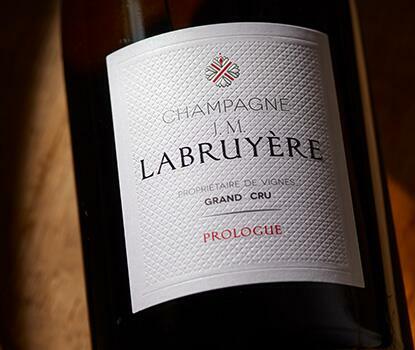
PROLOGUE EXTRA BRUT GRAND CRU NV
72% Pinot Noir, 28% Chardonnay— Dosage 0.8g/l
Bottled in 2016 and disgorged in 2021, the latest iteration of Prologue possesses superb tension. You are met with aromas of fresh lemons, apples and a touch of shortbread. The palate is taut, with more notes of citrus and crushed stone that further accentuate the bracing acidity. Youthful and exuberant at this stage but will quickly emerge as a brilliant example of a terroir driven gastronomic Champagne.
CORNEY & BARROW SCORE 17.5
RECOMMENDED DRINKING FROM 2022-2027
£ 185/CASE OF 6 BOTTLES, IN BOND UK
£ 215/CASE OF 3 MAGNUMS, IN BOND UK
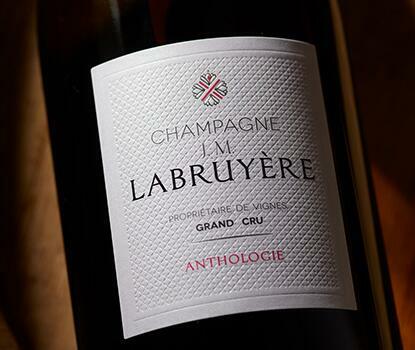
ANTHOLOGIE ROSÉ EXTRA BRUT GRAND CRU NV
72% Pinot Noir, 28% Chardonnay — Dosage: 2.4g/l
Only 3,500 bottles of this latest release were made, which like the prologue was bottled in 2016 and disgorged in 2021. The nose has an enticing combination of freeze-dried raspberries, strawberries and wet stones. On the palate, more crisp red fruit and minerality come through, which when combined with fine bubbles and a creamy texture delivers a predictably delicious experience. A serious and age worthy rosé Champagne that will be at its best served with food.
CORNEY & BARROW SCORE 17.5+
RECOMMENDED DRINKING FROM 2023-2029
£235/CASE OF 6 BOTTLES, IN BOND UK
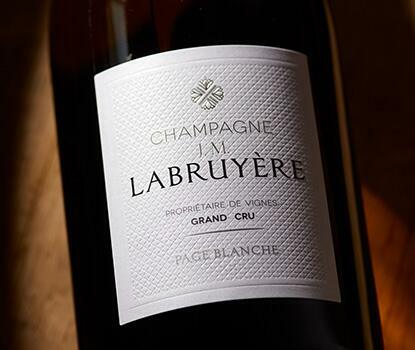
PAGE BLANCHE BLANC DE BLANCS BRUT NATURE GRAND CRU NV
100% Chardonnay— Dosage 0.0g/l
Made from two higher altitude plots — Sous-pisse Renards and Les Rochelles— the nose is full of orchard fruit, a little bread dough and packed with a nervy minerality. As to be expected with a zero dosage Champagne, the acidity is bracing, and the structure is taut. However, there is also an elegance and purity here that will reward those who give it some time in the cellar.
CORNEY & BARROW SCORE 17.5
RECOMMENDED DRINKING FROM 2024-2030
£265/CASE OF 6 BOTTLES, IN BOND UK
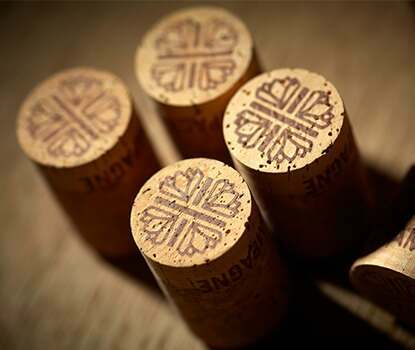
PARADOXE BLANC DE NOIRS BRUT NATURE GRAND CRU
100% Pinot Noir — Dosage 0.0g/l
From the 2016 vintage, this is an exceptionally pure expression of Pinot Noir taken from the estate’s top vineyards of Champs Saint-Martin Les Longues Raies and La Chenille in Verzenay. The nose offers glimpses of stony minerality and bright red berry fruit nuanced by brioche and almond paste. The densely packed palate reveals crunchy raspberries and clipped acidity, with mineral tension building towards a powerful and long finish. This will repay cellaring but is already drinking beautifully. A fine example of Verzenay Blanc de Noirs.
CORNEY & BARROW SCORE 18
RECOMMENDED DRINKING FROM 2024-2030+
£285/CASE OF 6 BOTTLES, IN BOND UK
